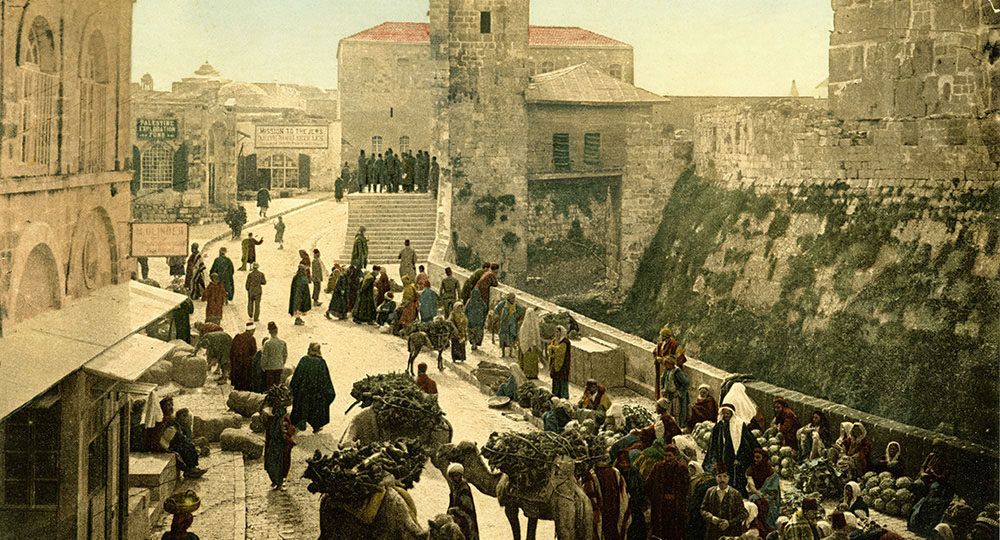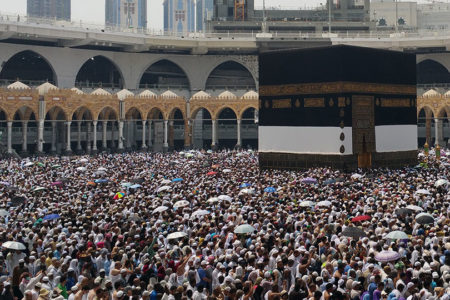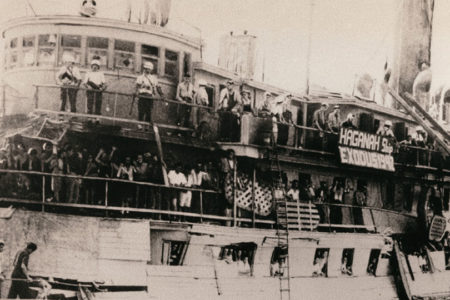Jerusalem Forgotten
The adage “A picture is worth a thousand words” is truly apropos since a photograph can instantly tell a complete story. I’ve always thought it would be spectacular to study a picture of Jerusalem taken 600 years ago, so I could experience the medieval city unfolding before my eyes.
I’d be able to appreciate the splendor of the ancient architecture, peer into the bustling market full of shoppers buying food for their families, and watch children playing in the venerable capital of ancient Israel. Yet we are only left with written words and old maps to help us understand the Jerusalem of that time.
The first photographs of the city were taken in 1844 when French photographer Joseph-Philibert Girault de Prangey captured Jerusalem for the first time by daguerreotype, the first publicly known photographic process.
His pictures of 171 years ago cast a dark shadow on Jerusalem that I did not expect to see. They reveal a city that was desolate, uninhabited, and collapsed. Each image paints Jerusalem as barren and forsaken—abandoned by the world. Not a single soul graces any of his shots; every view lacks people, the life of any city.
And the ingenious architecture that made Jerusalem famous in the days of the Roman Empire appears to have crumbled to dust. It was never preserved.
Girault de Prangey’s pictures told a story worth a thousand words about a Jerusalem forgotten.
Mamluk Period (AD 1260–1517)
The Jerusalem of the Bible, where God set His heart, fell into heavy neglect not long after the Mamluk Muslims took control of it. The Mamluks were originally military slaves of the Ayyubid dynasty in Egypt that rose to power under Saladin and took control of Egypt in 1250. Ten years later, the Mamluks demonstrated their ability by pushing back the Mongols, defeating the Crusaders, and capturing Syria and the Holy Land.
The once-famous capital of King David was relegated to merely another city of the Mamluk dynasty governed from Damascus. Initially the Mamluks sought to make Jerusalem the center of Islamic studies, commissioning beautiful building projects that can still be appreciated today in areas of the Muslim Quarter. Yet the rest of the city and its people fell to the wayside.
The Mamluks imposed a heavy tax on Jerusalem’s Jews and Christians, forcing Christians to wear blue turbans and Jews to wear yellow ones to distinguish them from Muslims.
The city’s shrines became dilapidated, and Bedouin tribesman made it difficult for pilgrims to come and worship in the holy city. Pilgrimages provided Jerusalem’s primary revenue. Without the steady income, the City of Peace fell from its place of prominence among the world’s cities.
In addition, two earthquakes shook Jerusalem to the core, leaving many buildings uninhabitable; and a plague known as the Black Death took the lives of many Jerusalemites.
By the end of Mamluk rule, the city’s population had shrunk from 40,000 (in 1260) to 10,000 because of heavy taxation and extreme neglect.
Ottoman Control (1517–1917)
The Ottoman Turks captured Syria and the Holy Land, wresting Jerusalem from the grip of the Mamluks and transferring authority from Mamluk Damascus to Ottoman Constantinople.
Like their predecessors, the Ottoman sultans were known for their heavy-handed taxation: “Minorities would survive, or even thrive, as long as they paid their taxes.”1
One of the great sultans of the Ottoman Empire was Suleiman the Magnificent; his name says it all. He sought to make Constantinople the center of Islamic life through his architectural achievements that still stand today in both Constantinople and Jerusalem. The current walls of the Old City are his handiwork. He rebuilt them and permitted Jewish people to immigrate to Ottoman Palestine. A small number of Jews returned to Jerusalem, and many more established the city of Safed in the north.
After Suleiman’s death, subsequent rulers of the Ottoman Empire lost vision and passion for the holy city. With little attention given to Jerusalem, her streets slowly disappeared under sewage because of a lack of management. The sewage had no runoff , so it seeped from the unkempt roads into the city’s vital water cisterns, making Jerusalem’s water undrinkable.
Jerusalem’s homes were disintegrating and grew dilapidated due to heavy property taxes that impoverished homeowners. Famous American author Mark Twain chronicled his visit to Jerusalem in 1867 while it was still under Ottoman rule: “Jerusalem is mournful, and dreary, and lifeless. I would not desire to live here,” he said in The Innocents Abroad.
Areas of the city, the Galilee, and the Carmel mountain range were completely deforested and forgotten. Without trees in the mountains to soak up the rain, the valleys filled with water and eventually turned into malaria-infested swamps. Even the Arabs didn’t want the land.
These were the challenges early Jewish settlers faced as they immigrated to Ottoman Palestine in the 1880s. In fact, many lost their lives from malaria due to the conditions the absentee Ottoman landowners allowed to fester there.
Mark Twain commented on the general state of Israel under the Ottomans:
[It is a] desolate country whose soil is rich enough, but is given over wholly to weeds—a silent mournful expanse. . . . A desolation is here that not even imagination can grace with the pomp of life and action. . . . We never saw a human being on the whole route. . . . There was hardly a tree or a shrub anywhere. Even the olive and the cactus, those fast friends of worthless soil, had almost deserted the country.2
For this reason the Fifth Zionist Congress more than 110 years ago created the Jewish National Fund (JNF). The JNF raised money from Jewish communities around the world and legally purchased and cultivated land in Israel under the Ottoman Empire. It planted more than 250 million trees and a new future in the barren, lifeless country neglected by the Muslim Mamluks and Ottomans.
The Jewish people shed much blood, sweat, and tears to bring life to a land that no one else seemed to care much about.
Endnotes
- James Carroll, Jerusalem, Jerusalem: How the Ancient City Ignited Our Modern World (New York, NY: Houghton Mifflin Harcourt, 2011), 201.
- Mark Twain, cited in James L. Gelvin, The Israel-Palestine Conflict, 3rd ed. (New York, NY: Cambridge University Press, 2014), 30.








